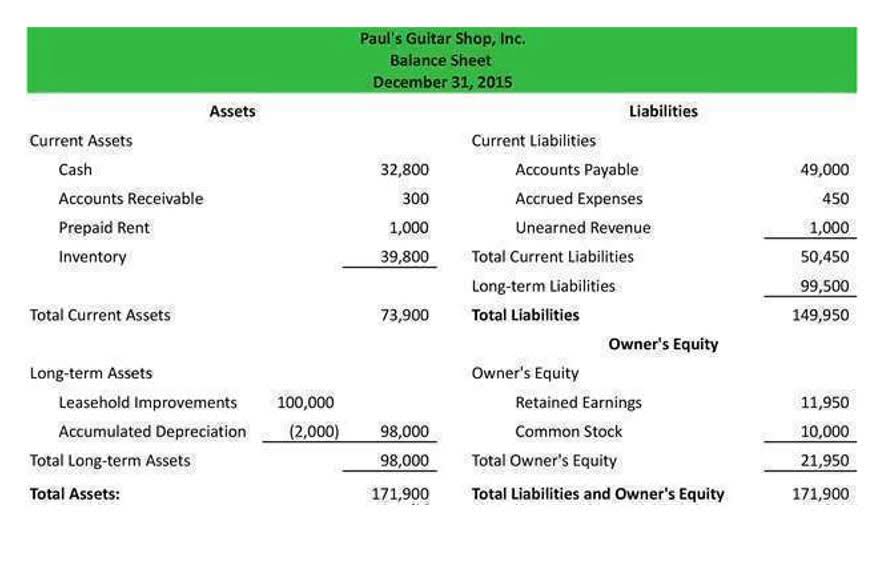(+612) 2531 5600
info@la-studioweb.com
Get direction
Google map


This, in turn, may make it more attractive to investors and lenders, as it indicates lower default risk. The balances of the amount of debt borrowed from financial lenders or created through bond issuance, less repaid amounts, are included in separate line items in the liabilities section of the balance sheet. In a worst-case scenario, where no lenders are willing to refinance an outstanding debt, the need to pay off a loan could result in the immediate bankruptcy of the borrower. By utilizing these resources, tools, and professional contacts, you can enhance your financial analysis skills and gain deeper insights into the financial health and stability of companies. On the other hand, a declining TIE ratio raises red flags for both management and shareholders, as it suggests diminishing excess income to service debt. This could potentially result in harsher loan terms or the increased likelihood of defaulting on obligations.

If your business has debt and you are looking to take on more debt, the interest coverage ratio will give your potential lenders an understanding of how risky a business you are. It will tell them whether you would pay back the money that they are lending you. The times interest earned ratio formula is expressed as income before interest and taxes, divided by the interest https://www.bookstime.com/ expense. Maintaining a balanced debt-to-equity ratio is essential to prevent over-leveraging. A prudent approach to debt means taking on only as much debt as the business can comfortably handle, considering its cash flow and profitability. Efficient management of working capital, which includes managing cash, accounts receivable, and inventory, is essential.
A benchmarking analysis involves comparing a company’s TIE ratio with the industry average to determine its relative performance. An above-average TIE suggests that the company is well-positioned to cover its interest expenses, reflecting stronger credit health than its peers. The Times Interest Earned Ratio is an essential financial metric measuring a company’s ability to fulfill its interest payments on outstanding debt. Times interest earned ratio is a solvency metric that evaluates whether a company is earning enough money to pay its debt.
A higher discretionary income means the business is in a better position for growth, as it can invest in new equipment or pay for expansions. It’s clear that the company’s doing well when it has money to put back into the business. Conversely, a lower TIE ratio raises concerns about a company’s financial health, as it implies a reduced ability to cover interest costs with current earnings. Such a situation may lead to difficulties in securing financing or even jeopardize the company’s ongoing operations if debt servicing becomes unsustainable. While TIE exclusively evaluates interest-payment capabilities, it is often considered alongside other financial ratios to provide a comprehensive view of a company’s financial health.
The reported range of ICR/TIE ratios is less than zero to 13.38, with 1.59 as the median for 1,677 companies. Rho’s AP automation helps process payables in a single workflow — from invoice to payment — with integrated accounting, and Rho fully automates expense management. For example, your firm may email customers when an invoice is 30 days old and call clients if the times interest earned ratio provides an indication of an invoice reaches 45 days old. Company founders must be able to generate earnings and cash inflows to manage interest expenses. These two liquidity ratios are used to monitor cash collections, and to assess how quickly cash is paid for purchases. In this exercise, we’ll be comparing the net income of a company with vs. without growing interest expense payments.
However, a higher ratio is generally considered better as it indicates that the company has more cash available to cover its debts and invest in the business. The times interest earned ratio is a calculation that measures a company’s ability to pay its interest expenses. One of them is the company’s decision to either incur debt or issue the stock for capitalization purposes. Businesses make choices by looking at the cost of capital for debt or stock. Interest expense encompasses all interest-related obligations, such as interest on loans, bonds, or any other interest-bearing liabilities. It is a direct measure of the financial burden imposed by the company’s debt.
If you have three loans generating interest and don’t expect to pay those loans off this month, you must plan to add to your debts based on these different interest rates. Simply put, your revenues minus your operating costs and expenses equals your EBIT. In a perfect world, companies would use accounting software and diligence to know their position and not consider a hefty new loan or expense they couldn’t safely pay off. But even a genius CEO can be a tad overzealous and watch as compound interest capsizes their boat. However, as your business grows, and you begin to turn to outside resources for funding opportunities, you’ll likely be calculating your times earned interest ratio on a regular basis.


When you sit down with the financial planner to determine your TIE ratio, they plug your EBIT and your interest expense into the TIE formula. Get instant access to video lessons taught by experienced investment bankers. Learn financial statement modeling, DCF, M&A, LBO, Comps and Excel shortcuts. In our completed model, we can see the TIE ratio for Company A increase from 4.0x to 6.0x by the end of Year 5. In contrast, for Company B, the TIE ratio declines from 3.2x to 0.6x in the same time horizon. While there aren’t necessarily strict parameters that apply to all companies, a TIE ratio above 2.0x is considered to be the minimum acceptable range, with 3.0x+ being preferred.
There are no comments